Berleying is an essential part of fishing whether you’re a saltwater or freshwater angler.
Berley can be used n all fishing applications and can be the difference between catching a fish or going home empty handed. For our Tasmanian readers, please note that berley is not permitted in Tasmanian trout waters.
There are no secrets to berleying, it is just a matter of knowing the techniques in which to use it. Successful berleying methods begin with combining the correct ingredients and keeping the flow consistent. Once you have these two processes in place, the fish will come to you.
Depending on where you are fishing, different methods will apply. The ingredients of the berley can be similar though it is the application of the techniques that may differ.
Below is a list of locations where you’ll find different techniques working in different situations.
When fishing the surf, beach or a rock platform, berleying can be executed in essentially the same manner.
In all instances I use the same technique by adding fish pellets, tuna oil and pilchards into an onion or scaler bag. This is attached to a long rope and left to hang over the rocky ledge or wash around on the shore break in the surf or beach.
The pressure of water hitting the bag is enough to break up the contents dispersing them at an equal rate. If you have enough berley in the bag, there is no need to attend to it, leaving you to concentrate on fishing.
Beach or surf fishing can be challenging at the best of times. I see many anglers casting out bluebait or a pilchard then sit back waiting for a bite, some all day.
One piece of bait tossed into a kilometre or more of sandy beach isn’t going to attract many fish. You might catch a fish or two but you may not get to experience mind-blowing sessions of countless numbers of fish.
Using a blend of berley in the surf or from the beach will disperse evenly with the current attracting fish far and wide. You’ll also be very surprised at what species are attracted; however gummy sharks, snapper, silver trevally, Australian salmon and mullet are the most common.
Berleying from a pier is similar to that of berleying in the surf. An onion or scaler bag can disperse a good blend of berley evenly throughout the water and is the best way at attracting a wide range of species. Regardless of what pier you’re fishing, the technique is the same.
My concoction consists of fish pellets poured into the bag then 2 X Hookem Fish Kandy berley bombs placed on top. As the water disperses the pellets, the Fish Kandy berley bomb breaks up creating an oil slick on the surface. Large chunks of minced tuna are also deployed to the sea floor.
This berley is so effective that you can fish baits on a paternoster rig on the bottom for species such as whiting, snapper, mullet, salmon, elephant fish and gummy shark. Meanwhile fishing a float setup on the surface can also yield a good catch of garfish, pike or snook depending on the hook and baits used. Having two styles of berley in the one bag can allow you to fish for a wider range of species.
Berleying from a boat can be done in numerous ways, and for local Victorians there are two main techniques depending on what waterway you’re fishing.
Berleying in Western Port can be quite difficult due to the tide fluctuation. Sometimes, the tide can be running up to 8 knots and if berleying from the surface, the berley could travel for quite some kilometres before reaching the bottom.
The ideal berley technique is to use a weighted berley pot and place it on the sea floor or tie an onion bag to your anchor chain. As the tide rushes past the pot or bag it disperses the berley. The only downfall is if your berley is too fine, the pot or bag will become empty very quickly and will require regular topping up, not ideal if it’s on your anchor chain.
This berley should be a chunkier blend of large berley pellets mixed with tuna oil and a single Hookem Fish Kandy log.
Another berley technique for Western Port is using a Secret Weapon berley dispenser. Berleying with this method can only be done at least two hours either side of a tide change.
The berley is usually a concoction of chopped up pilchards, diced Hookem Tuna Kandy log and pellets drizzled with tuna oil.
This is packed into the dispenser and lowered to the bottom behind the boat. When on the bottom the rope can be shaken, dispersing the contents on the sea floor (this should be done a dozen or so times). As the tide flows, the berley is dispersed. If you use this method half an hour to a tide change, the berley will flow away from the boat, as the tide changes the berley will flow back under the boat in the opposite direction. When the boat spins, you already have a set berley trail, unless the fish have already eaten it all.
Port Phillip can be divided into two sections, north and south. In the southern sections from Mt Martha to Portsea on the eastern side and from Indented Head to Queenscliff on the western side, berley techniques like that of what’s used in Western Port are the same. While these sections of the bay are heavily influenced by tidal flow, I suggest the above-mentioned techniques be used.
Further north and the technique differs somewhat. Tidal flow is very limited the further you travel up the bay, in which case berleying from the surface is a common practice when targeting snapper.
Pilchards cut into about 5 sections and tossed over the side in equal handfuls is as simple as it gets. This is called cubing and as long as it repeated consistently it is a very effective technique.
If you’re fishing for whiting in the upper reaches of the bay, an onion bag filled with pellets left to dangle from the transom is a proven method. The berley is usually very fine and for what little current there is, the particles are carried to the bottom and washed around attracting a wide range of species including whiting. If tuna oil is added to the mix, garfish are also a common catch should a float setup be used.
Many anglers target sharks when fishing offshore. In this case, a great deal of planning goes into the berley used, and the technique of course.
Berleying for sharks is very simple. Two onion bags are required and a minced tuna log placed into each. On each side of the transom the onion bags can be tied to float on the water’s surface. A bottle of tuna oil is tied to the transom with a dozen holes punched into the bottom to leak tuna oil onto the surface followed by blocks of pilchards or any fish offal to be punched though the berley pot attached to the boat.
With all this berley going through the water, it is only a matter of time before a shark swims up the trail.
Berleying in freshwater can be done in many ways, the simplest of all is when fishing a river. A blend of pollard blended with maggots (or gents), together with a small amount of water is ideal. Water should be added at equal intervals until the mix has a thick consistency so it can be moulded with your hand. The mix can be placed into a small berley cage attached above your hook. It’s a good idea to cast into the same location each time.
Another effective method is to use Stimulate Ultrabite. This bait and berley mix is already made for you incorporating a special fish pheromone that stimulates fish to feed. The berley can be used in the same manner as the pollard mix. However, the Ultrabite bait needs to be made up by blending the liquid and the powder together in the packet. When shaken, the two parts mix turning into a bright pink play dough type product. This then becomes the bait when small pieces are moulded onto the hook.
There are plenty of ways to use berley in our waterways and the above outlines are some of the techniques I have used over the years with excellent results.
Take it as you will, berley is an essential part of fishing and will increase your success rate if executed correctly. If you can get the mix, the process and the consistency of the flow working, you’ll very soon notice the results.
Reads: 22243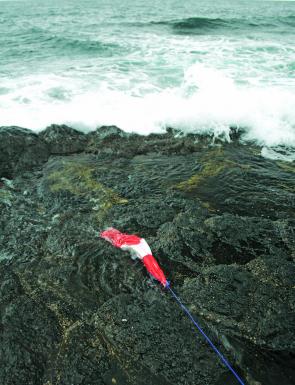
If berleying from the rocks ensure your berley bag is secure, strong waves and currents can pull it into the water.

A Secret Weapon berley dispenser is a great way to chunk berley in Western Port.

Berley pots containing lots of small holes are ideal when berleying for whiting. Lower it to the bottom and cast just behind the pot.
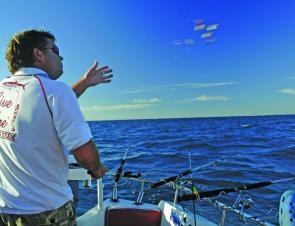
Cubing is an effective and proven berleying method for successful snapper fishing in Port Phillip.
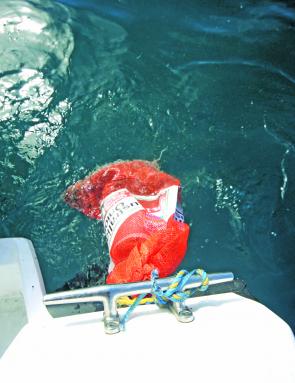
Berleying for whiting in the northern sections of Port Phillip can be done from the surface.
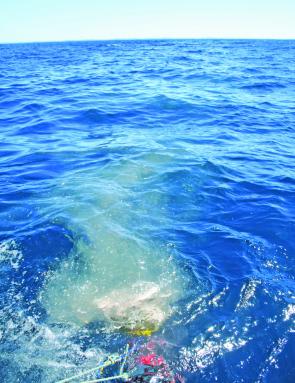
Thick berley trails are required when on the hunt for sharks offshore.
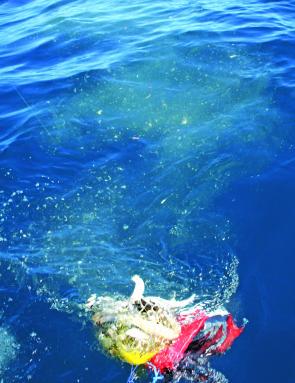
Thick berley trails are required when on the hunt for sharks offshore.
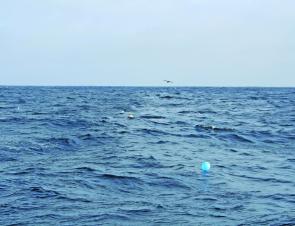
An oil slick from a tuna oil bottle when shark fishing allows you to see your berley trail and attracts fish.
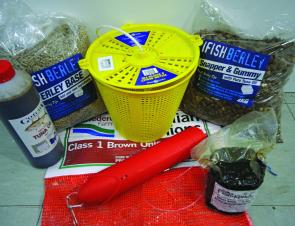
All the ingredients for saltwater berleying techniques.




